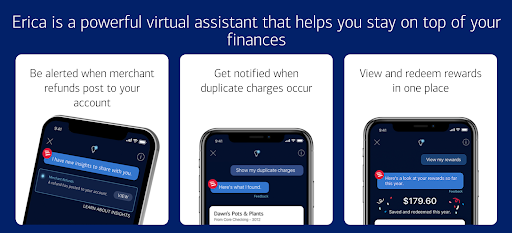If you’ve arrived on this blog, chances are that you are searching for the right strategies and tips to get accurate ChatGPT responses for your FAQs.
That also means you might have tried and tested various prompts to get the right responses from the AI (Artificial Intelligence) tool but haven’t succeeded yet.
That’s okay, you’re not alone. This is a growing concern for many people using the generative AI tool to gain perfect responses but, unfortunately, receive vague answers. Understanding the growing dilemma, we created a quick guide to perfect ChatGPT prompts and get accurate responses.
Before diving into its challenges, strategies, tips, and success stories, let’s understand ChatGPT and its mechanics below.
Table of Contents
- Understanding ChatGPT
- Mechanics of ChatGPT
- Challenges in Ensuring Accuracy and Trustworthiness
- Strategies for Enhancing Accuracy and Trustworthiness for FAQs
- Tips for users to obtain the best answers from ChatGPT for FAQs
- Case Studies and Success Stories
- Get Accurate ChatGPT Responses From the Right Prompts
Understanding ChatGPT
Chat Generative Pre-Training Transfer, now popularly known as ChatGPT, is a language model developed by OpenAI. It needs prompts to generate content that answers a certain query from users. ChatGPT successfully produces content because it has been trained with a mammoth of data online.
From writing a sentence and then paragraphs to generating interesting poems and even marketing ads, ChatGPT does it all. It runs on the “unconditional generation” technique called a transformer using neural network architecture that. With the help of this transformer, ChatGPT naturally produces content, therefore giving hints of human touch.
Mechanics of ChatGPT
There’s more to the mechanics of ChatGPT other than the transformer architecture.
We asked ChatGPT about its mechanics, and here’s what it says:

With the right prompt, we understood ChatGPT can go back to the conversation history with the user and focus on pivotal data to generate natural-sounding responses. But other than that, here’s what it does:
- It breaks down the inputs from its users into smaller units called tokens.
- The tokens are then converted into contextual embeddings that help this AI tool to understand the context of the conversation.
- Once it understands the input context, ChatGPT uses the transformer technique to generate a fixed-length representation called a context vector.
- The transformer also includes an attention mechanism that focuses on different input parts and allows ChatGPT to generate meaningful answers.
- It also uses conditional generation that allows the AI tool to generate content for each token.
Besides these, ChatGPT also uses sampling strategy, conversational context, user interaction, and feedback loop to bring together a response that meets the user’s needs.
Challenges in Ensuring Accuracy and Trustworthiness
Even after having such a detailed process, certain challenges hamper the results generated by ChatGPT and make users question its accuracy and trustworthiness. We’ve listed the top challenges for you below.
1. Lack of human-like common sense
ChatGPT is smart and, mind you, witty as well. It answers the questions well, and if it doesn’t, it still offers variations to meet the user’s expectations.
But this smart tool lacks common sense.
For example, if you keep receiving irrelevant answers, it doesn’t share any new responses after a certain limit. It keeps sharing the same answers repeatedly. It goes on to show that it lacks common sense, and, therefore may end up wasting user’s time and efforts.
2. Requires Human interaction to generate appropriate responses
Another challenge that ChatGPT users often face is either repeating themselves or refining their questions until they get the right response. That means ChatGPT is wholly dependent on human prompts rather than narrowing down the base of the initial query to share a response with its users.
Such a challenge can lead to a lot of time and efficiency loss, especially for users working on tight deadlines. They can’t rely on the generative AI tool to get the right answers, as they’ll have to add multiple prompts to get the right answer.
3. Handling complex or controversial topics
This is not just for ChatGPT but AI tools that generally fail to express their thoughts on complex or controversial topics.
When asked about its belief in the theory of relativity, here’s what ChatGPT says:

The tool doesn’t indulge in affirmative answers from its end when asking about its beliefs or opinions in certain established theories. Instead, ChatGPT reinstates what is already given and fails to answer what was initially asked.
4. Addressing Incorrect Answers
Many companies believed that with ChatGPT coming to the market in full swing, the content industry may take a huge hit. And they weren’t wrong.
Studies suggest that ChatGPT crossed 1 million users in just 5 days of launch and gained 100 million active users by January 2023.
A lot of companies started generating their content through the AI tool and tried building content for their websites.
But after a few months down the line, users started to realize its downsides as well, one being its ability not to offer the right answers.
CHatGPT was undoubtedly generating content if users were adding the right prompts for it, but here’s where the tool faltered:
- It cannot generate a content piece of more than 700-800 words for now. That means companies who plan to write long-form articles have to generate content on a section basis. And even then, they cannot guarantee a flow in the content piece as human writers can.
- It offers stats but without its source. A lot of writers had to search for the source of the stats separately but sometimes realized that these stats don’t even exist.
- It even fails to offer its users up-to-date data as it was trained on the database before 2021. Even if facts have changed for a certain topic, chances are that the content generated by the tool won’t be reliable.
5. Factors That Impact Trustworthiness in AI-Generated Content
These severe issues from above lead to another challenge about the data trustworthiness from the AI tool.
ChatGPT claims that one of its biggest challenges with content generation is bias and stereotyping.

Due to the training data, there are chances that the tool might show bias in the content it shares with its users. Worse, the statements can be false, misleading the users about their validity.
Strategies for Enhancing Accuracy and Trustworthiness for FAQs
Given how severe the ChatGPT challenges are, we identified the best possible ways to enhance the accuracy and trustworthiness of your FAQs. These strategies include:
1. Pre-training with reliable data sources
When training a model, you need to ensure that you are using high-quality, diverse, and up-to-date data for its pre-training process. This will allow you to increase the data spectrum and make answers more relevant. What’s more, you can filter misleading data to prevent your model from learning incorrect or skewed information.
2. Fine-tuning with human reviewers and guidelines
Another way to ensure trustworthiness in answers is through human intervention. With human reviewers, you can ensure that the answers generated are legitimate for users. Create a set of guidelines that reviewers can use to train the model and ensure that it learns to produce more accurate responses with each training interaction.
3. Verifying answers and credibility
AI generates content based on the dataset on which it has been trained. While the data you add may be right, sometimes it may vary based on the query added by the user. In that case, you must verify the answers through manual fact-checking when testing the model. It is always better to cross-check the answers from verified sources to keep your information up-to-date.
4. Optimizing responses
Another strategy you can use is optimizing responses for your AI tool. This can be done in multiple ways. Some of these include the following.
Tailored Prompts:
Create tailored prompts or questions that you know will yield consistent and right responses from the AI tool. For this, you can train your AI model with multiple prompts, so they generate desired results.
Conditional Logic:
This is another way to optimize your ChatGPT answers hassle-free. With conditional logic, you can ensure the AI tool generates specific answers for certain user queries.
Clarity & Simplicity:
If you are not receiving clear answers from the tool, you can keep modifying your questions. This form of encouragement will help the AI tool generate clearer and more concise answers for users.
5. Identifying and addressing biased language
Signs of biased language are one of the repercussions of the initial dataset used to train the AI tool. In such a scenario, you need to:
- Train the tool with diverse data to ensure that it avoids biases when answering a user prompt or question.
- When you see hints of bias in ChatGPT answers, you can leave another prompt that tells that such biased language isn’t right. Understand that the tool is still in the learning stage. It is bound to make such mistakes. But with your direction, the tool can avoid such biased language in the future.
6. Customized interaction
To ensure that you receive trustworthy answers from the AI tool, make sure to have customized interactions with the tool. This is a great way to condition the AI tool to receive the right answers. Also, it helps you add a human touch to the conversation.
7. Regular training and calibration of human reviewers
Don’t let just one person be in charge of the conditioning process. Involve more human reviewers to train the AI tool regularly. You can include team members from the product team who know the product and service better. They can train the tool and input information about your product and its upcoming changes. This way, when users interact with the AI tool, they will find more information about your tool.
You can also ask your content team to interact with the tool regularly. This will ensure that the tool understands the tone and voice it must use when people ask them questions about the product.
8. Handling controversial topics
When asked ChatGPT about its downsides, here’s what it says:

“Overly verbose and generates biased content.”
These aren’t our words but what ChatGPT thinks about its performance overall. Now, imagine your customers interacting with this tool to understand your product’s downsides. What do you think the tool might say?
You need to take care of this when training with the AI tool to ensure it doesn’t generate negative reviews about your product. To handle such controversial subjects, you must train the product regularly and help its condition so that it doesn’t leave a bad impression on prospects.
9. Implementing real-time user feedback
This strategy must be implemented even if you don’t use AI integration with your tool. Consistent feedback from users can help you improve FAQs and allow you to ensure that they are helpful for users every time they have doubts about your product.
Documentation tools like Document360 allow you to capture feedback from users every time they visit a FAQ article on the help center.

You get to learn whether your articles have been helpful to users or not. Based on the feedback, you can make changes to the information and ensure it helps all users whenever they have doubts about the product.
The same can be implemented when you use ChatGPT for generating FAQ answers. Once it generates answers, it allows you to rate the experience.

Based on the feedback, you can help the AI tool understand how the answers can be improved further so that users get meaningful and right answers.
Find out how Document360 can help you to reduce support tickets!
Book A Demo
10. Continuous Improvement and Learning
If you thought that receiving feedback from users and implementing its takeaways during the training period with the AI tool is all you have to do, we’re sorry to say that’s not true.
It needs to be conditioned consistently. That means you need to ensure that human reviewers train the tool, keep sharing feedback, and implement the right measures as per the feedback regularly without fail. This is the only way the AI tool can improve continuously and improve its results every time.
Also read: Best AI Prompts For Creating FAQs
Tips for users to obtain the best answers from ChatGPT for FAQs
Now that we’ve understood a wide range of strategies one can implement to receive trustworthy answers from ChatGPT, let’s take a look at some of the useful tips that can streamline the way one writes its prompts.
Please note that these tips will prove to be beneficial for human reviewers who plan to train the AI tool regularly.
1. Providing clear and specific questions or prompts
This is undoubtedly one of the most basic yet crucial tips that people still don’t follow through properly. Explain your concerns in simple words and let the tool know how long the answer should be.
There’s a difference when you add a prompt like

When compared to a prompt below:

Did you notice? In the second prompt, we explained pain points like a lesser workforce or explaining these suggestions to other team members. Based on the prompts, the AI tool generated different answers, and the tone was also different .
Therefore, you must ensure that you provide clearer and more precise questions to receive desired answers.
2. Requesting clarification if responses are unclear
The best part about using ChatGPT is its ability to generate answers with the same intent multiple times. If you feel that the answer wasn’t clear or didn’t match the intent of your question, you can always request it to generate another response. This way you can ensure that clear answers are generated for your FAQs.
3. Verifying information from trusted sources
As mentioned above, ChatGPT users’ biggest challenge is their ability to generate bias or include wrong facts in their answers. These can leave a bad impression on users who refer to your FAQs to get their doubts cleared. That’s why you must develop a practice that helps you deliver only the right information to your customers.
Once the answers are generated, verify from the right sources to understand if the information generated is correct. Even if you condition the AI tool with regular training, there are chances that it still might generate wrong answers if it fails to understand the intent of the user’s question. So, verify the information before adding it to your FAQs.
4. Breaking down complex questions into simpler components
Another useful tip to improve the prompts for your FAQs is to break down complex questions into simpler components. Don’t expect to write multiple questions in one go; expect the tool to answer all your questions in one go. Ask one question at a time so that it gives you more accurate and clear answers hassle-free.
5. Using common language and avoiding technical jargon
You can also try avoiding complicated words that may confuse the AI and hamper its output. Avoid technical jargon and write your prompts in simple language to help ChatGPT understand the intent of your question faster.
6. Reporting issues and offering feedback to OpenAI
Make it a practice to report any issues you face with the tool and share feedback with OpenAI to help them enhance the performance of the tool. Constant feedback will allow the developers to improve performance consistently.
Also Read: Best Tools to Create CustomGPT for Your Business
Case Studies and Success Stories
We’ve so far understood how ChatGPT works and how we can improve its accuracy with the right prompts and feedback to get the right answers to some of the frequently asked questions. Now, let’s take a look at some of the success stories of some of the brands that use AI to their benefit and help their users get answers faster.
Erica – Virtual Financial Assistant by Bank of America

In an attempt to help their customers find answers to their questions faster, Bank of America came up with an AI assistant solution, called Erica, to answer all commonly asked questions faster.
With Erica, the bank has successfully tackled common issues such as:
- Refunds
- Duplicate charges
- Reward points
- Recurring charges and bills
- Bill reminders
- Updates on monthly spending
- Balance updates
- Past transactions
- FICO® Score insights
These updates have helped them to reduce the frequently asked questions from customers and improve overall customer experience with the brand in terms of the services.
Ada Health GmbH – Symptom Checker

With the intent to help people understand their symptoms and identify possible reasons why they aren’t feeling well, the makers of Ada wanted to bring a revolution in the health sector with AI. This AI tool is known for successfully diagnosing possible reasons why people aren’t feeling well. It asks multiple questions and even answers frequently asked questions about health concerns. This two-way conversation helps people to diagnose their conditions and get treatment faster.
Get Accurate ChatGPT Responses From the Right Prompts
ChatGPT has surely brought a revolution in the generative AI sector. Its ability to generate answers to the questions asked by users has helped people from different sectors simplify their work in no time.
While that’s a great upside, the AI tool is also known for its lows. But to tackle them the right way, we’ve listed down 10 tried and tested strategies along with tips that will make it easier for every ChatGPT user to get accurate and trustworthy answers to their frequently asked questions.
We hope this helps!




 –
– 

